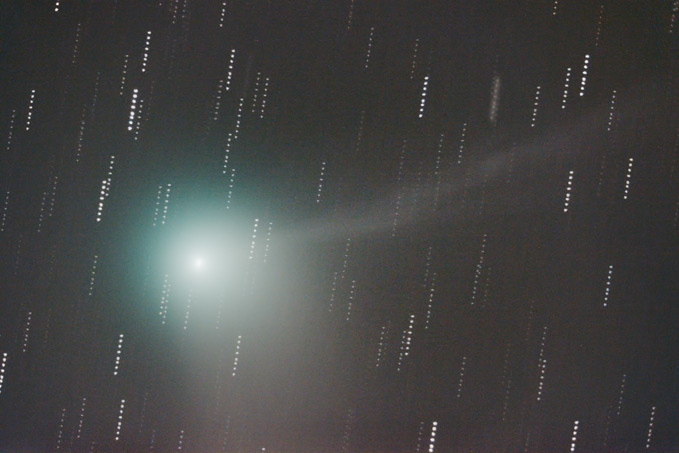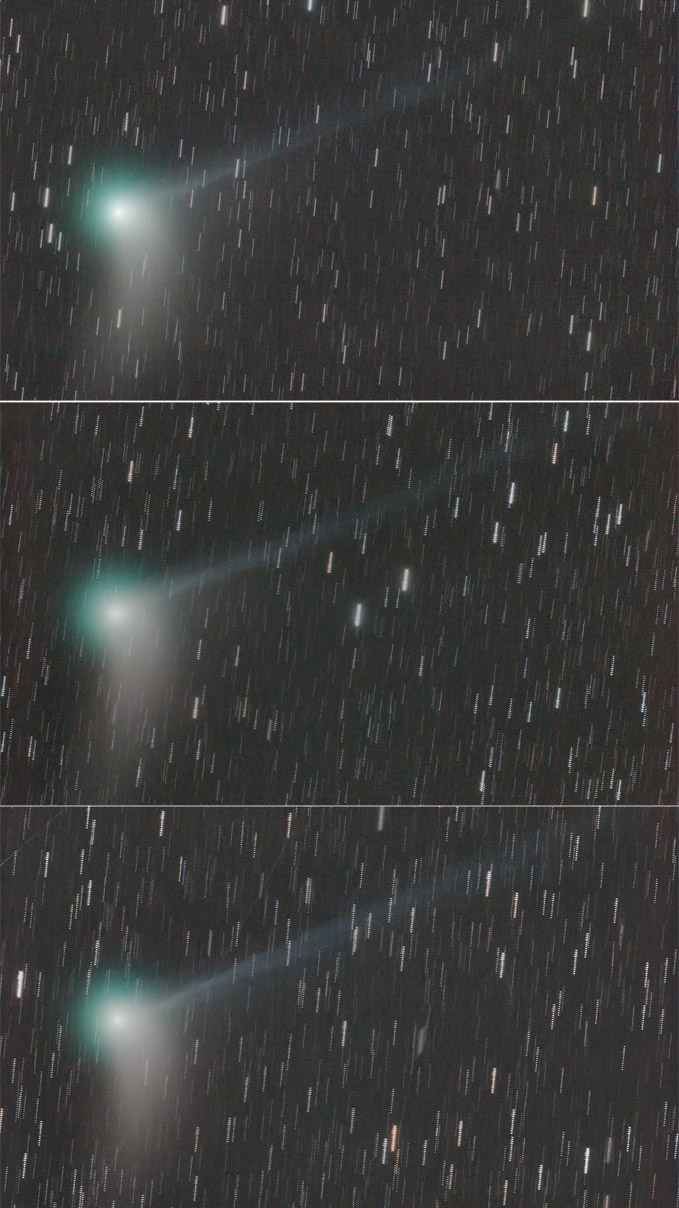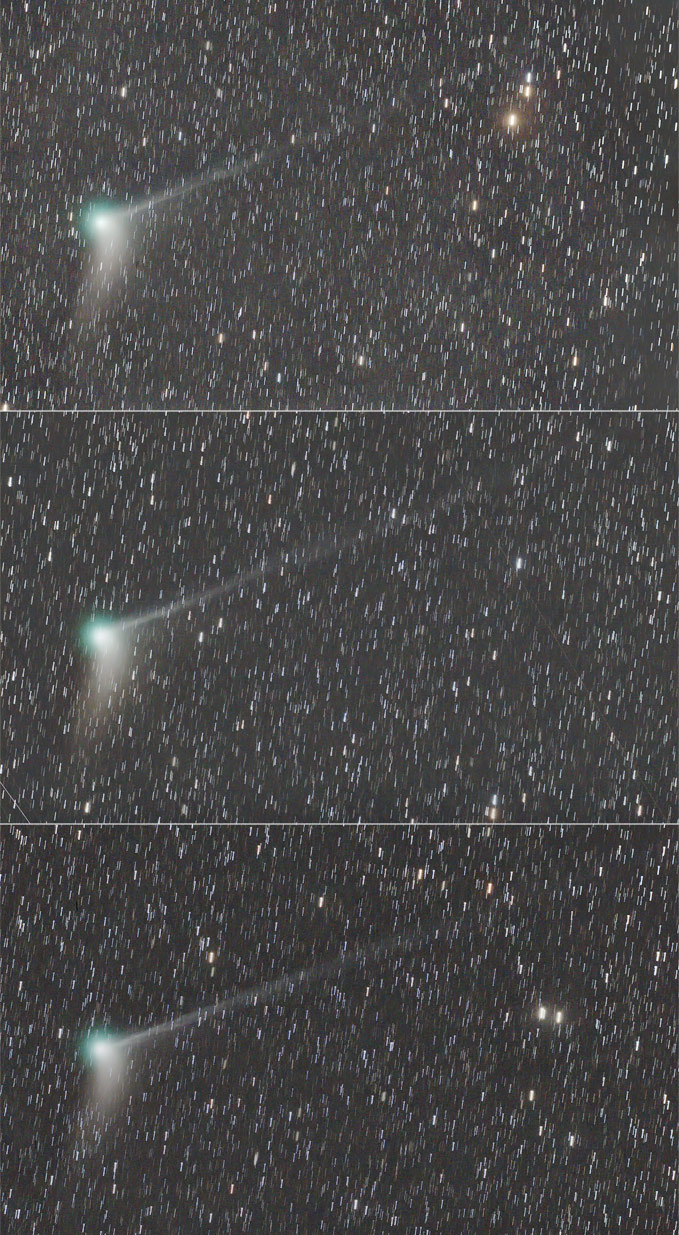| Date & Time: | Jan 10 2016, from 27:00 to 27:23 JST(+0900) |
| Composed 8 shots with 3min. exposed |
| Optical: | Meade 25cm(10") Schmidt-Cassegrain with a conversion lens (f=1600mm, F6.3) |
| with BaaderPlanetarium UV/IR cut filter |
| Auto-guided with Meade LX200 Equatorial & Pictor 201XT |
| Digital Camera: | Canon EOS 600D (Remodeled) |
| Location: | Ooizumi, Hokuto city, Yamanashi pref. |
| Date & Time: | (Upper) Jan 8 2016, from 27:46 to 28:20 JST(+0900), 3min.×12shots |
| (Middle) Jan 9 2016, from 28:21 to 28:58 JST(+0900), 4min.×10shots |
| (Lower) Jan 10 2016, from 26:09 to 26:54 JST(+0900), 4min.×12shots |
| Optical: | TAKAHASHI 16cm(6.3") epsilon (f=530mm, F3.3) |
| with IDAS LPS-P2-FF light-pollution suppression filter |
| Auto-guided with TAKAHASHI JP Equatorial |
| Digital Camera: | Canon EOS 550D (Remodeled) |
| Location: | Ooizumi, Hokuto city, Yamanashi pref. |
| Date & Time: | (Upper) Jan 8 2016, from 27:44 to 28:18 JST(+0900), 3min.×12shots |
| (Middle) Jan 9 2016, from 28:19 to 28:56 JST(+0900), 4min.×10shots |
| (Lower) Jan 10 2016, from 26:16 to 26:52 JST(+0900), 4min.×10shots |
| Optical: | BORG 67FL, with a conversion lens (f=324mm, F4.8) |
| with BaaderPlanetarium Moon&Skyglow filter |
| Auto-guided with TAKAHASHI JP Equatorial |
| Digital Camera: | Canon EOS 6D (Remodeled) |
| Location: | Ooizumi, Hokuto city, Yamanashi pref. |







